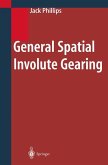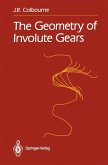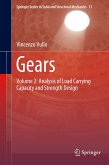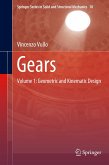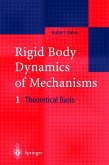The theory of planar involute gearing is generalized for the design and machine-cutting of spatial involute gearing. The monograph solves a problem, which has been discussed for over 150 years. Involute skew helicals, oblique involute hypoids, offset involute worms, bevels and straight spur gears are all explicable by the same unifying theory. A fundamental law, not only for involute but for all kinds of gearing, is enunciated and proven. The spatial involute gearing introduced and explained in this book involves in all cases straight line paths for both points of contact, constant angular velocity ratio, absence of any built-in transmission error, the non-importance of all minor errors at assembly, toleration of the flexing of an elastic gear box, and ample opportunity to avoid inadequate load bearing and lubrication. The continuous screw motion of an imaginary straight-sided rack generating contemporaneously both flanks of the spatial involute teeth can be readily related to ordinary engineering practice.
It has been hard for me to escape the imprint of my early, strong, but scattered trains of thought. There was, at the beginning, little to go by; and I saw no clear way to go. This book is accordingly filled with internal tensions that are not, as yet, fully annealed. Subsequent writers may re-present the work, explaining it in a simpler way. Others may simply invert it. I mean by this that, by writing it backwards, from its found ends {practical machinable teeth) to its tentative beginnings (dimly perceived geometrical notions), one might conceivably write a manual, not on how to understand these kinds of gears, but on how to make them. Indeed a manual will need to be written. If this gearing is to be further investigated, evaluated and checked for applicability, prototypes will need to be made. I wish to say again however that my somewhat convoluted way of presenting these early ideas has been inevitable. It has simply not been possible to present a tidy set of explanations andrules without exploring first (and in a somewhat backwards-going direction) the complexities of the kinematic geometry. There remains, now in this book, a putting together of primitive geometric intuition, computer aided exploration of certain areas, geometric explanations of the discovered phenomena, and a loose sprinkling of a relevant algebra cementing the parts together.
It has been hard for me to escape the imprint of my early, strong, but scattered trains of thought. There was, at the beginning, little to go by; and I saw no clear way to go. This book is accordingly filled with internal tensions that are not, as yet, fully annealed. Subsequent writers may re-present the work, explaining it in a simpler way. Others may simply invert it. I mean by this that, by writing it backwards, from its found ends {practical machinable teeth) to its tentative beginnings (dimly perceived geometrical notions), one might conceivably write a manual, not on how to understand these kinds of gears, but on how to make them. Indeed a manual will need to be written. If this gearing is to be further investigated, evaluated and checked for applicability, prototypes will need to be made. I wish to say again however that my somewhat convoluted way of presenting these early ideas has been inevitable. It has simply not been possible to present a tidy set of explanations andrules without exploring first (and in a somewhat backwards-going direction) the complexities of the kinematic geometry. There remains, now in this book, a putting together of primitive geometric intuition, computer aided exploration of certain areas, geometric explanations of the discovered phenomena, and a loose sprinkling of a relevant algebra cementing the parts together.


